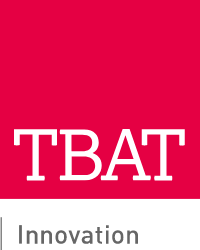


Sam Stephens
Director
Sam Stephens of TBAT Innovation asks whether the use of ‘Nudge Theory’ could increase R&D Tax Credit claims
Why don’t we make choices that are good for us or our businesses? Could it be that we are ignorant of those choices or just plain stuck in our ways?
I’ve been pondering this after seeing the latest figures from HMRC which show that whilst claims to research and development (R&D) tax credits are increasing, this is at a lower rate than in previous years. Talk about looking a gift horse in the mouth, especially as the credit can be a crucial source of finance and cashflow for further innovation.
How might more company directors be persuaded to apply; and do they need a ‘nudge’?
The work of the government’s Behavioural Insights Team (BIT), dubbed the ‘Nudge Unit’, is fascinating. Set up in 2010 to help improve government efficiency, this top team of thinkers apply behavioural science to find out why people don’t make the decisions that would be best for them. Nudge Theory would have us believe that if you present choices in a different way, it is possible to change behaviours. Experiments by the Unit have included the use of plainer English in letters to non-payers of vehicle tax – “pay your tax or lose your car” – which doubled the number of people who paid up.
So what could behavioural science tell us about the company that can apply for R&D tax relief but doesn’t? Is the HMRC scheme, itself a ‘nudge’ to encourage companies to invest more in R&D, in some way flawed by design? Helpfully, the BIT has devised a simple framework, EAST, to check out whether a policy is effective and efficient. EAST stands for Easy, Attractive, Social and Timely.
Assuming we all want to encourage more clients to claim back what is due to them, could this incentive scheme be made more Easy, Attractive, Social and Timely? What ‘nudges’ based on this framework would give the biggest shove in behavioural outcomes?
It appears that too many companies are still unaware or ignorant of the tax credit; if they do know about it they don’t understand what qualifies as research and development; completing the forms can be a solitary, time-consuming exercise, and the lack of any specific deadlines – other than within the two year qualifying period – is ironically counter-productive.
So here’s a challenge: if you were redesigning the R&D Tax Credit scheme, what might you tweak to steer more innovators to claim? You can be as creative as you like.
As featured on: www.accountingweb.co.uk. Click here for direct link.
Since 2022, HMRC’s Mandatory Random Enquiry Programme (MREP) has been reviewing R&D tax relief claims to reduce error and fraud. While the programme is effective in improving compliance, it has also caused a significant drop in SME claims. This article examines the impact of MREP on SME behaviour, explores why businesses are withdrawing from claiming, and questions whether the programme is supporting innovation or discouraging genuine R&D activity.

We take an in-depth look at the latest R&D Tax Credit Statistics, covering the period ending March 2024, highlighting key updates and trends in the R&D tax relief landscape. It covers changes to the SME and RDEC schemes, the introduction of new requirements such as the Claim Notification process, and developments in HMRC compliance through the Mandatory Random Enquiry Programme.

Assists organisations in accessing research and development grant funding across a range of UK and EU schemes and industry sectors.
Get In Touch